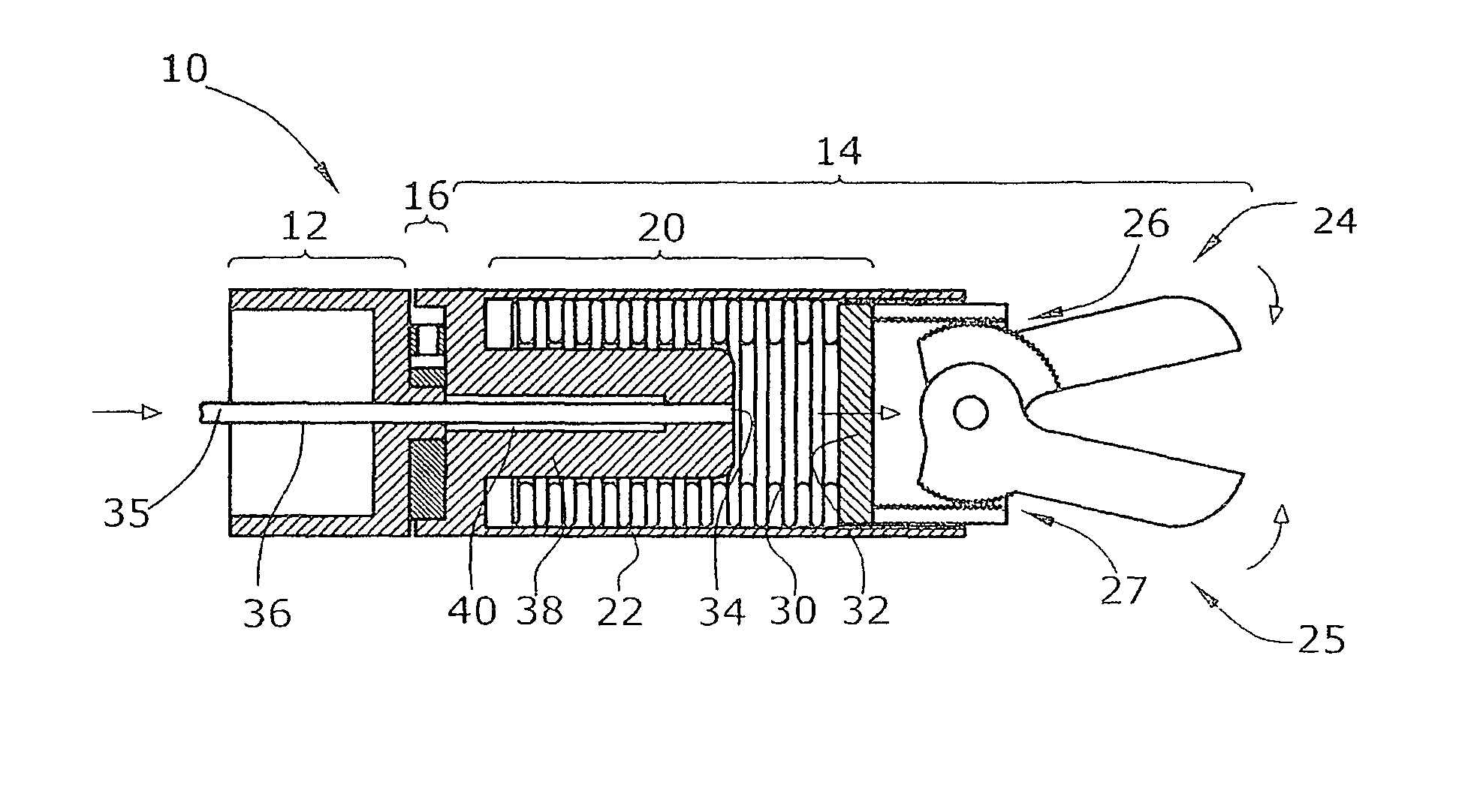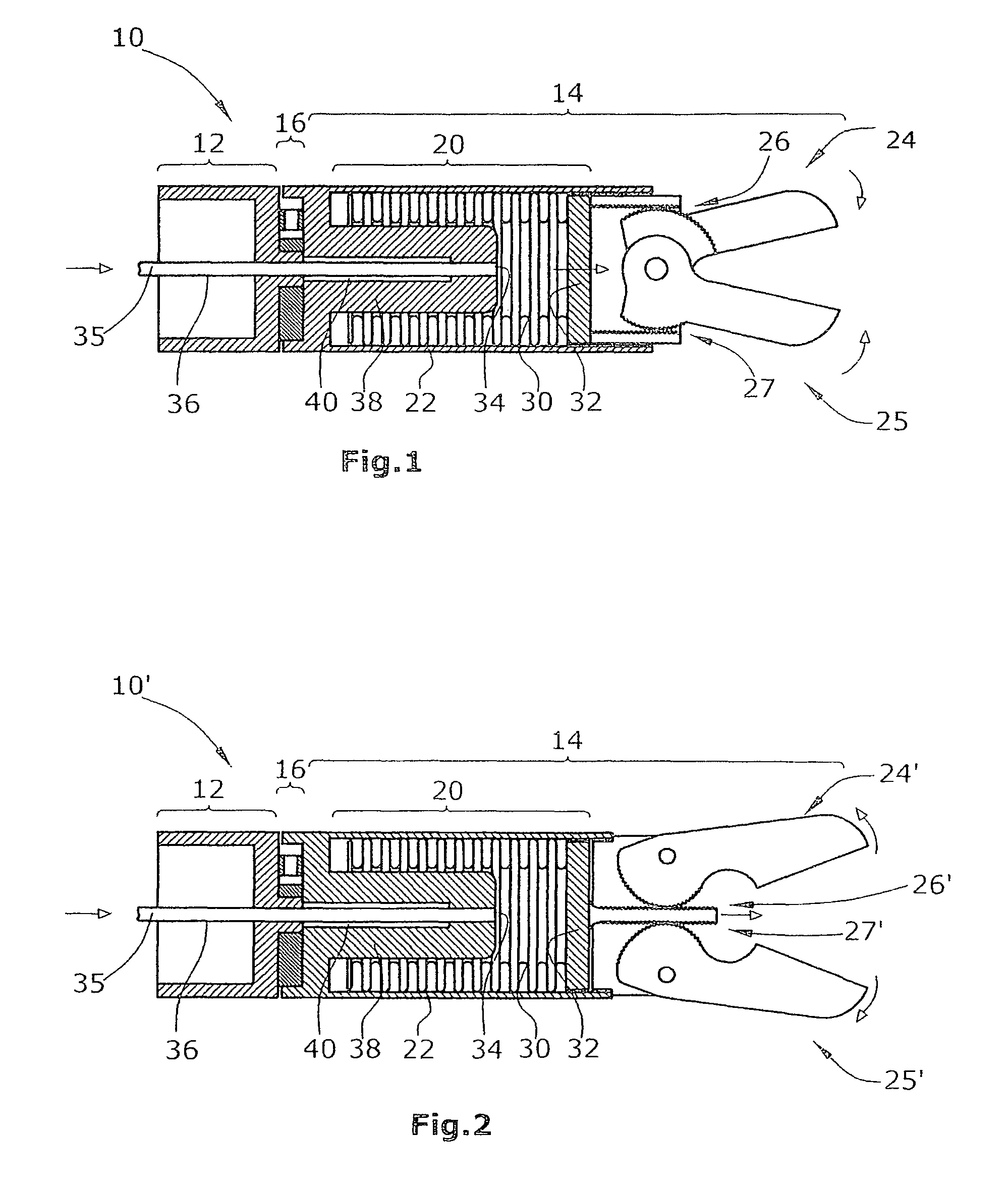Surgical robotic system
a robotic system and robotic technology, applied in the field of surgical robotic systems, can solve the problems of unfavorable patient safety, unfavorable patient safety, and inability to use the end effector, and achieve the effects of high reduction ratio, simple and compact design of the end effector, and high reduction ratio
- Summary
- Abstract
- Description
- Claims
- Application Information
AI Technical Summary
Benefits of technology
Problems solved by technology
Method used
Image
Examples
Embodiment Construction
[0024]FIGS. 1 and 2 each illustrate a surgical robotic system 10 and respectively 10′, said system forming a part of a surgical robot for use in minimal-invasive surgery. Each of the surgical robotic systems 10,10′ shown in the Figures comprises a movable robotic arm 12 and an end effector 14 movably fastened to robotic arm 12. End effector 14 is fastened to robotic arm 12 via a force sensor 16 configured as a force / moment sensor with six arms.
[0025]End effector 14 comprises a hydraulic cylinder 20, a housing 22, two pivotable end effector elements 24,25 and toothed-rack drives 26,27; 26′,27′, each of the latter being assigned to a respective one of the end effector elements 24,25. The outer diameter of end effector 14 is 5 to 15 mm.
[0026]Hydraulic cylinder 20 is formed by a metallic bellows 30, a closure piston 32 and a hydraulic-line opening 34 of hydraulic line 36. Hydraulic line 36 has an internal cross-sectional area of about 0.2 mm2. Said bellows 30 and respectively said hydra...
PUM
 Login to View More
Login to View More Abstract
Description
Claims
Application Information
 Login to View More
Login to View More - R&D
- Intellectual Property
- Life Sciences
- Materials
- Tech Scout
- Unparalleled Data Quality
- Higher Quality Content
- 60% Fewer Hallucinations
Browse by: Latest US Patents, China's latest patents, Technical Efficacy Thesaurus, Application Domain, Technology Topic, Popular Technical Reports.
© 2025 PatSnap. All rights reserved.Legal|Privacy policy|Modern Slavery Act Transparency Statement|Sitemap|About US| Contact US: help@patsnap.com


